Scientific name Symphyla | ||
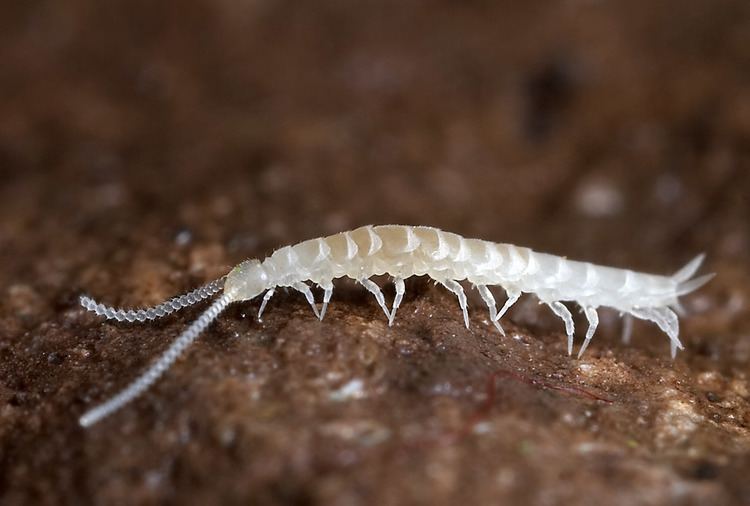 | ||
Similar Pauropoda, Myriapoda, Arthropod, Scutigerella immaculata, Protura | ||
Symphylan
Symphylans, also known as garden centipedes or pseudocentipedes, are soil-dwelling arthropods of the class Symphyla in the subphylum Myriapoda. Symphylans resemble centipedes, but are smaller and translucent, and only distantly related to true centipedes. They can move rapidly through the pores between soil particles, and are typically found from the surface down to a depth of about 50 cm. They consume decaying vegetation, but can do considerable harm in an agricultural setting by consuming seeds, roots, and root hairs in cultivated soil.
Contents
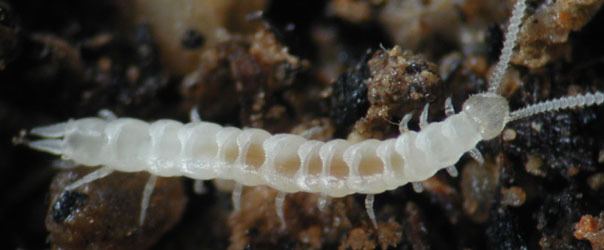
Juveniles have six pairs of legs, but, over a lifetime of several years, add an additional pair at each moult so that the adult instar has twelve pairs of legs. Lacking eyes, their long antennae serve as sense organs. They have several features linking them to early insects, such as a labium (fused second maxillae), an identical number of head segments and certain features of their legs.
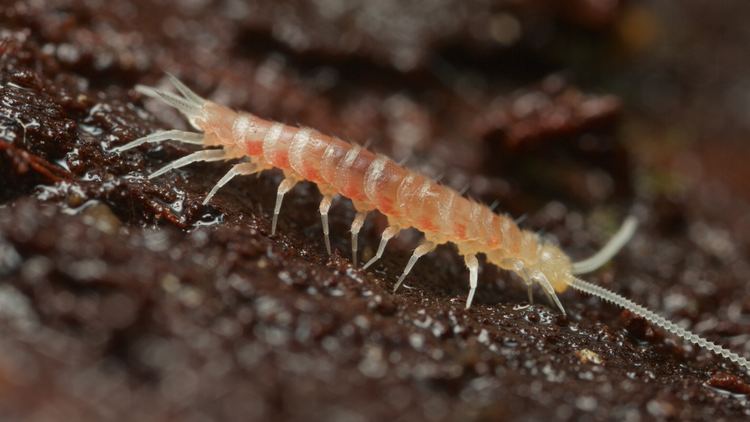
About 200 species are known worldwide.
Proturan with collembolan and symphylan
Description
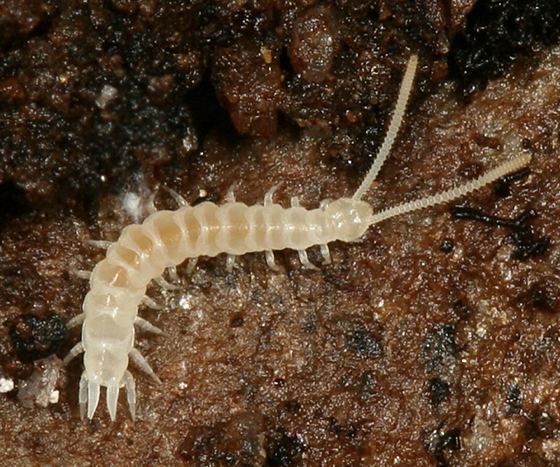
Symphyla are small, cryptic myriapods without eyes and without pigment. The body is soft and generally 2 to 10 millimetres (0.08 to 0.4 in) long, divided into two body regions: head and trunk. An exceptional size is reached in Hanseniella magna, which attains lengths of 25 to 30 mm (1.0 to 1.2 in).
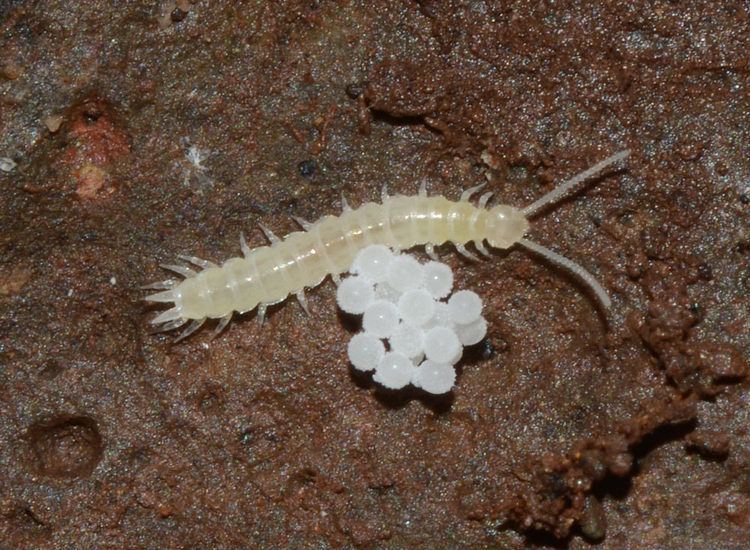
The head has long, segmented antennae, a postantennal organ, three pairs of mouthparts: mandibles, the long first maxillae, and the second pair of maxillae which are fused to form the lower lip or labium of the mouth. Disc-like organs of Tömösváry, which probably sense vibrations, are attached to the base of the antennae, as they are in centipedes.
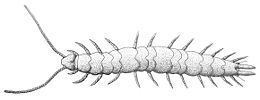
The trunk comprises 15–24 segments, which are protected by overlapping dorsal plates. Ten or twelve segments bear legs. The first segment is large and usually provided with a pair of legs, the last segment is slender, lacks legs, and possesses a pair of cerci. Immature individuals have six pairs of legs on hatching. Each pair of legs is associated with an eversible structure, called a "coxal sac", that helps the animal absorb moisture, and a small stylus that may be sensory in function. Similar structures are found in the most primitive insects.
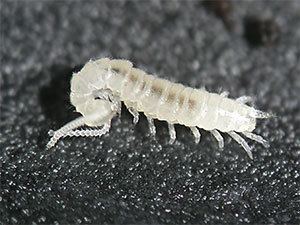
Symphyla are rapid runners. They are primarily herbivores and detritus feeders living deep in the soil, under stones, in decaying wood, and in other moist places where they feed on the root hairs and rootlets and can sometimes cause crop failure. The garden symphylan, Scutigerella immaculata can be a serious pest of vegetable crops and tree seedlings and occurs in greenhouses as well as agricultural situations. A species of Hanseniella has been recorded as a pest of sugar cane and pineapples in Queensland. A few species are found up trees and in caves. A species of Symphylella has been shown to be predominantly predatory, and some species are saprophagous.
Symphylans breathe through a pair of spiracles on the sides of the head. These are connected to a system of tracheae that branch through the head and the first three segments of the body only.
The genital openings are located on the fourth body segment, but the animals do not copulate. Instead, the male deposits 150 to 450 packages of sperm, or spermatophores, on small stalks. The female then picks these up in her mouth, which contains special pouches for storing the sperm. She then lays her eggs, and attaches them to the sides of crevices or to moss or lichen with her mouth, smearing the sperm over them as she does so. The eggs are laid in groups of eight to twelve.
Symphylans have been reported as living up to four years, and moult throughout their life.
Despite their common name, morphological studies commonly place them as more closely related to millipedes and pauropods than the centipedes, in the clade Progoneata. Molecular studies have shown conflicting results, with some supporting the Progoneata clade, others aligning symphylans with centipedes or other arthropods, although some are weakly supported.
